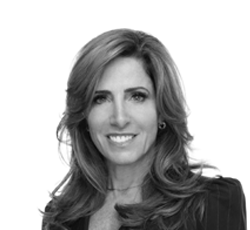Prioritising Customer Success During Challenging Times
Chris Dishman
|
Senior Vice President of Customer Success
of
Totango


Chris Dishman


Episode Summary
Today on the show we have Chris Dishman, Sr. VP of Customer Success at Totango.
In this episode, we discussed Chris's unique transition from being a customer of Totango to becoming a crucial part of its team. We explored how his past experiences as a customer offered invaluable insights to shape the company's approach to customer success.
We then dove into an overview of Totango and its innovative customer success platform. Chris shed light on the concept of composable customer success and the importance of refining the customer journey. He shared interesting cases and surprising use cases of Totango, emphasizing that the principles of customer success are not limited to the software industry.
The conversation took a compelling turn as we discussed the importance of customer-centricity in a company's culture and strategy. With the increasing emphasis on customer success in the face of layoffs and budget constraints, Chris highlighted the role of robust Customer Success Platforms (CSPs) in boosting team efficiency.
We then navigated the realm of data and automation. We addressed how companies are focusing on automating onboarding and improving their processes to scale with limited resources. Chris flagged data integration as a major challenge in this domain and emphasized the significance of clean, consistent data for a seamless customer journey.
We wrapped up by discussing actionable strategies for improving customer retention. Chris advised against overcomplication and recommended focusing on one area at a time, refining it before moving on to the next. In a hypothetical scenario where he has 90 days to improve retention, he suggests starting with the value proposition and effectively communicating it to customers.
As usual, I'm excited to hear what you think of this episode, and if you have any feedback, I would love to hear from you. You can email me directly at Andrew@churn.fm.
Mentioned Resources
Transcription
00:00:00 Chris: Understand your customer, understand and kind of measure and constantly work them through that journey to ensure the retention, right? Let's constantly keep an eye on, on the value that they need to be retaining from whatever your product or service is in order to be able to ensure the retention
00:00:16 VO: How do you build a habit-forming products? How do you… Don't just guns for revenue in the door?
00:00:23 Andrew: This is CHURN.FM, the podcast for subscription economy pros. Each week, we hear how the world's fastest growing companies are tackling churn and using retention to fuel their growth.
00:00:36 VO: How do you build a habit forming products ? We crossed over that magic threshold to negative churn. You need to invest in customer success. It always comes down to retention and engagement. Completely bootstrap. Profitable and growing.
00:00:49 Andrew: Strategies, tactics and ideas brought together to help your business thrive in the subscription economy. I'm your host, Andrew Michael, and here's today's episode.
00:01:00 Andrew: Hey, Chris, welcome to the show.
00:01:02 Chris: Yeah. Thanks, Andrew. It's good to be here.
00:01:03Andrew: It's great to have you. For the listeners, Chris is the VP of customer success at Totango, a customer success platform trusted by over 5,000 companies to deliver inspired customer journeys. Prior to Totango, Chris was the VP of customer success at ON24, and he was also a previous customer of Totango during his time there. So my first question for you, Chris, is what's been the most interesting learning moving from being a customer of Totango to now becoming a part of the team?
00:01:31 Chris: It's interesting. It's a fun transition, you know, and especially because one of the things that you learn and you see this a lot just as you read blogs and listen to podcasts, we're all in the same boat, right? We're all trying to solve for the same problem. We do it in different nuanced ways. But ultimately, the problem of churn and ensuring retention and scale and you know, how we approach that's... is something that we all get to challenge. So, it is fun to be able to step into a position that's driving a platform to help do that for other people. So CS kind of... for CS, is definitely an interesting twist for sure. But, yeah, it's, it's fun kind of working through this, the same process just in trying to address the retention needs of our customers as well as ourself, you know?
00:02:17 Andrew: Yeah. It's interesting. I've spoken to a few different guests of the show. I can't remember any specific right now because there's been a lot of guests on the show, but where this has been a similar path where there've been a user and consumer of the product or service and then joining that product or service in the customer success capacity as well. I think one thing is for sure that the learning curve is almost zero when you're coming to the place because you're so familiar with the product or software. And how do you think that helps, like moving into a new role in customer success specifically as well in the space where you're leading a team for customer success at a customer success software company.
00:02:53 Chris: Yeah. Well, you're right. I mean, the learning curve on the technology has certainly... is certainly improved. But the other aspect of it is, you know, I mean, we all wanna learn from our customers, right? And that's how we improve retention, improve, you know, what we do and what we provide as it relates to our customers. And so, coming in with a customer, having been a customer, you don't just have the customer mindset, you are the customer mindset. And so to be able to leverage that and say, hey, here are things that I saw as a customer that now I get to bring to the table is definitely insightful as it relates to company direction. You also can take that and take that approach and move it forward as you start talking about value and value realization and what were you getting out of the product and what should we kind of double down as it relates to how we approach our customers and in ensuring they're getting the value and the return on their investment.
00:03:46 Andrew: Yeah, I think it's super interesting cause I think no matter how good your research is at a company, there's always that element of bias that's like, you try to understand your customers as best as possible like you try to empathize with them, but unless you really are the customer, it gets ready different. And I think now, like you've got this state where the knowledge is still fresh, it's still relevant. It's without bias. Yeah. I think even for you, yourself, like a year from now, like, you're not gonna be as in touch with the customers as you want to be, no matter how in touch we say we always are, I think. So really unique position. I think this period in time window that you're in having that insight to be able to like, relate that back to the product team and to the rest of the organization.
00:04:25 Chris: Yeah. Absolutely.
00:04:26 Andrew: So you moved Totango. Maybe just give us a little bit of an overview as well. Obviously, Totango a big player in the space, but just for the listeners, like what is it exactly that Tango does and how do they help their customers?
00:04:37 Chris: Yeah. So Totango is a customer success platform, right? So we're gonna sit in the ecosystem, we're gonna turn around and help you understand what's going on within your customer, right? We won't wanna keep the hand on the pulse of what a customer is doing and where the value is gonna be realized. And then help drive journeys. You know, we say the customer journey is the product. And so it's the concept is, treat it just like it is a product. So you're gonna turn around and, as you work a customer through their journey with you, you want to make sure that you're reviewing, and kind of deploying different stages of that journey. And then, as you do that, you measure, you measure the success of it, and then turn around and make adjustments, changes, and then, and then roll out those changes.
00:05:24 Chris: And so it's kind of this constant evolution of a customer journey that allows you to continually refine your approach across the board. So and at Totango, we do that in a very, you know, we call it composable customer success. It's a very easy way to look at those different modules, as it were of the customer journey, and then adjust and modify those through the process, for your customers to continue to improve the value that they're getting out of the product.
00:05:54 Andrew: Very cool. And yeah, I think, like I said, I think not tanker doesn't really need an introduction, but it's always good just to set the context. I'm also intrigued in as well, like joining someone like Totango when you arrived, was there any sort of interesting use cases that you saw the team using Totango for that you hadn't thought of before? And the inverse, like was there anything that you had been using at On24, like and using Totango in a way that you bought to the team now and was something different to the table?
00:06:23 Chris: Yeah, I mean, you know, it's interesting. Totango's got a pretty wide range of customers and I'm coming from a more SaaS software-centric space. And also in more of a high touch customer success model. We did have a scaled approach and SMB customers and things that we were driving on a digital front at ON24. But a lot of our focus and attention was on those larger customers. In coming to Totango. I mean, we've got a number of customers that are more using the tool in a very service industry specific, which is kind of interesting for me, right. Coming from SaaS, it's not something I would think about but, you know, TaskRabbit, we've got some interesting stories around them and how they used it for their taskers, you know, and that's just a hundred percent service. So, and they're leveraging the tool tremendously. So, it is interesting to see how people can get into and I think we've all done this, where you get into a technology and you start using it and you realize, hey, this is scratching the itch that you have in a certain area to help improve process in scale approach. So that was one of the ones that was a real surprise. I would say for me, just more in the services space. I would say that the areas that ON24 has used it and the things that I kind of brought in, I wouldn't say there's anything newer or shattering because really the focus of Totango is around that SaaS product, right? So, we were doing a lot of the things and account coverage and ensuring that we were tracking and monitoring how people are doing from health and multidimensional health prospects and things like that. So, nothing really newer or shattering there, from that standpoint. But, yeah, it's definitely been interesting to look at some of the new use cases as I've kind of gotten involved in a lot of the customers at Totango.
00:08:27 Andrew: I find that very interesting, especially like looking to other sectors and domains or, because I think customer success in itself was like a role that's really come out of software as a service, in practice. Like, I think there are other equivalents in other industries, but they're just not flagged or called custom success in essence. And I think like one of the episodes I really loved actually was, I think it was Ellen Goffman from Segment, if I recall correctly. And at some point they were trying to get inspiration for how they could improve the customer success within the organization. And I think then they started looking at like, which were some of the best hotel chains and how did they provide the best customer service to their customers, and what could we emulate and what could we bring and draw for inspiration from in those instances? And they managed to get some good people within those organizations to come in, just like do workshops with the team, just to give them some fresh perspective. So it's interesting that you said this use case.
00:09:21 Chris: Yeah, it is. No, it's very interesting because it's one of the things that when I kind of came in early, we looked at, I was looking at and reading some things on Disney, right? Because it's like, okay, when you think about customer success, we're all in some way, shape or form in some sense of customer success. If you're doing anything for somebody who's buying something from you, you need to be able to get to their value of whatever it is they're purchasing, whether it is SaaS or whether it's a surface or whatever. And then the other thing that I found interesting in this kind of early reading, and I'll have to provide you the context of the book, but it was around looking at Disney specifically and how your bad customer experience, or your bad customer experience, I guess with anybody, is going to be something that you measure against across the board.
00:10:12 Chris:: It doesn't matter what it is, right? So if you have a bad experience at a movie theater or a bad experience at a restaurant, or you kind of set a bar of what your expectations are as it relates to what you need and the value you're gonna get out of whatever it is. And that's where Disney as the example was has set the bar exceptionally high, just in how they treat people, right? And so when you look at that and you say, okay, I wanna measure myself against that regardless of what industry I'm in or what segment I'm in, I want to have that kind of world class renowned support service, and ultimately, drive to the success of that customer. So it is interesting how customer success, even though it's not necessarily called that in every space, it absolutely exists across the board, you know?
00:10:58 Andrew: Yeah, absolutely. And I think the magic as well, like with Disney and there were some of these world-class experiences with companies that are able to deliver. It's really like treating it as an end-to-end experience, like every touchpoint of the customer journey and seeing how you can improve and perfect those touchpoints. 'Cause I think often they're not in software and products, like we don't really think about the end-to-end journey. There's not really a team that's fully focused, like it's very compartmentalized, like marketing does their bit, then we hand over to success and sales and we hand over to product and then to lifecycle. But like a previous discussion as well was like a good job of like the customer success as well is not just like servicing customers, but just making sure that everybody in the organization as well is like doing their part to create an amazing experience along the customer journey as well. And that your customers get this cohesive experience. It's not just very disjointed. And, I think that's where the magic lies in Disney is like, everything is connected. Everything is an experience and it's all part and feels familiar, I think, like wherever you go.
00:11:58 Chris: Yeah. Stringing those together is really critical, right? And I know that we talk about customer value and customer centric companies, and it is something that a lot of people say, and I don't know that many people do very well, right? Which is to say, Hey, we're a customer focused company. And when you think about what does that mean, it's having the customer and the value that they're getting right at the center of every aspect of what you do, whether it is marketing or sales or support or engineering or product or services, those kind of things. And so, being able to tie all of those people together, and ensure that they're all on the same page and they're all working to the customer's value for the customer's value, one cohesive unit is pretty critical. And that is kind of key to what we feel at Totango is essentially that, right? Provide a system that allows the right visibility across the board so that that way you can enact and drive through that process, which is kind of key.
00:12:57 Andrew: Yeah, absolutely. I think that the idea of customer centricity is like over-communicated, over-plate, but I think, like you said, very few companies rarely actually practice it in reality. And I think, at least from my part, like working previously as well, a community like Hot Joe, where it really was like putting the customer at the center of everything, and like the, it was driven from the top down. Like, so the CEO David Domin was like really adamant about this in every aspect of the business and where somebody might join the company and think, okay, I need to make sure like we're driving revenue and approve results in the first week. And then the first question will be what value does this deliver to our customers? And like right when you're hearing that from the top down sort of thing, it's say, okay, like the focus is not on like the bottom line, but it's on the customer satisfaction, happiness, because knowing that ultimately that's what's gonna drive the bottom line in the future, that's what's gonna build a great business. But I think that needs to be like, intrinsic within the culture, and it needs to be like really, really heavily driven from the top down.
00:13:56 Chris: Oh, a hundred percent agree. A hundred percent agree.
00:13:59 Andrew: Nice. So you joined a new role now as well, and pretty sure it's an interesting space. You're trying to understand all the different use cases and seeing different industries now that you maybe had not expected before. We chat a little bit about this before we got started, but I'm keen to hear your thoughts as well. How are you seeing customer success and the industry evolving now as we move into 2023? I think there's definitely a completely different climate. We've been on a rollercoaster over the last two, three years, I think. And interesting to hear like how do you see the business evolving and how do you see yourself evolving with net?
00:14:35 Chris: Yeah. You know, it's interesting, as I've been talking with a number of customers and coming in and kind of getting into the weeds with the customers as it relates to how they're using Totango and what's important to them as they look through this next year. I'm seeing a bit of a... I don't wanna say it's a shift, but it's almost a resorting back to some of the basics of what I saw customer success back in 10, 12 years ago, right? So when customer success first started becoming a discipline that people were paying attention to and actually putting a name to it, everything was about just retention, right? It was just about, Hey, let's just manage gross retention, gross churn, let's make sure that customers are healthy and that they're getting the value out of the product and we're keeping 'em around. And that was the initial kind of view of customer success when I first got into the space. And as it should, it's evolved and you know, more about expansion and growth and a number of other things. But what's really interesting is I'm seeing and hearing from people that they're getting back to this more away from the growth at all cost mode and more of, Hey, let's just lock in and retain the business that we've got. Times are tough. Everybody's conscious about their budget. So let's make sure that we're retaining our customers well. And so, you know, that focus on gross retention has been the shift that I'm seeing and hearing from people just across the board, which has been pretty interesting.
00:16:13 Andrew: I said to you before the show, like, let's not talk about this cuz I have some assumptions, and this is, probably, I think churn retention as well is like always been overshadowed by growth over the last like five, 10 years. You've definitely seen more and more companies caring about it and like a lot more sophistication in analyzing and understanding it, but still not really prioritizing it. And I think there's definitely going to be a big shift this year towards like prioritizing retention and you said like gross and like just keeping the customers that we do have because times are going to get tough, budgets are going to be pulled, and trying to make sure that you stay within that business and frame of mind is critical. I'm keen to see that as well on the flip side, from your perspective, like a service like Totango where people turn to you and see as a tool that's really gonna help us understand our business better, to be able to retain customers longer. How do you see business from your perspective? Are you seeing a new growth in customers or pretty much business as usual or nothing really different from that perspective? Because I'd make assumptions that there are some businesses that are gonna win in this environment where people would say, okay, I need to do more of this thing in this time. Do you think something like Totango and other customer success platforms do better in this environment or just the same as every other company?
00:17:31 Chris: I think there's a marginal improvement there for sure. You know, as people get more in tune with the need for retention, the question then becomes, okay, how do we do that? And we know that there's different tools for different jobs and, and so CSP is very much a tool that's specific to doing the job that we needed to do, which is understand your customer, understand and kind of measure and constantly work them through that journey to ensure the retention, right? Let's constantly keep an eye on the value that they need to be retaining from whatever your product or service is in order to be able to ensure the retention. So we haven't seen a slowdown by any stretch. I mean, from the economic side of things. I mean, we're, we're definitely still seeing a lot of activity as it relates to that. And I would say that as companies continue to look at and prioritize customer success, they're gonna wanna do that now. You know, it's also, we've seen a lot of layoffs and a lot of people even in customer success being let go and teams being reduced. And so, you know, that gets into even quite frankly, the greater need for a solid CSP to be able to help people work in a more efficient manner, just because of the fact that there's still budgets that need to be met. So we're seeing some of that as well.
00:18:53 Andrew: Yeah, it's very interesting, this fund's perspective as well, because like you say, the awareness is definitely there now for every company they need to understand and focus on retention. And as you say, like now, if anything, it almost becomes like a catalyst for people realizing that customer success needs to be a part of the business and we need to be managing and taking advantage of the existing user base we have. It's definitely a totally different climate. I wonder like, even from a venture perspective as well, if there's even pressure coming from that side, and I'm pretty sure there is to bring in customer success and to centralize that is focused to retain customers better. Nice. Are you seeing any other patterns in the markets? What are some of the surprising things maybe you're hearing from customers today when it comes to customer success?
00:19:44 Chris: You know, I mean, I wouldn't say, I wouldn't say it's surprising, but like what we were just talking about, the need to, to drive scale across the customer success team has been something that we're seeing, people really start to double click on as it relates to the business as a whole, right? So, I hate to use the word do more with less, but unfortunately, that's kind of the state that people are in. It's like, okay, we can't keep adding, you know, CSM resources as we add additional customers. So the question becomes how do you continually scale and improve your processes with that? So we're seeing a lot of people kind of lean into that a little bit more, which is driving digital automations of the journey and various touchpoints and engagements with your customer in a way that doesn't require a lot of handholding by ACSM and that you can kind of continue to measure and monitor and adjust that across the board. So we're, we're seeing a lot of that as well.
00:20:47 Andrew: And what would you say, like, are some of the first steps customers are taking then to improve their scale and their reach with the team that they have?
00:20:57 Chris: Yeah. You know, I mean, what we see a lot of people focusing on, I would say two areas, as it relates to scale one of 'em is an onboarding, right? So, to automate as much as possible an onboarding program is really helpful because time to value is really quick, right? Is really important. And so anything you can do to improve the time to that first value for a customer is gonna be an initial win just to help show them the value that they need, or that they're gonna be realizing through the product that they've got over time. So that's kind of one. Another one would be in renewals, right? So we're looking at the backside of the cycle where, okay, assuming that they're getting the value and that they're gonna renew, what can we do to automate a renewal process and ensure that that's as seamless as as possible, and that we understand and can drive initiatives for a customer through that process. So, you know, those are things that we're kind of constantly doing and building out these various plays and things with people within the product. And that's, that seems to be the two of the larger areas of focus that we're seeing across the board right now.
00:22:09 Andrew: And in terms of the onboarding side of things, where are companies getting started? What are these onboarding plays looking like for your to customer? And maybe in the context of Totango, like how are you helping with that?
00:22:21 Chris: Yeah, absolutely. You know, I mean, obviously onboarding with the customer and how they drive an onboarding initiative is gonna vary from customer to customer, but a lot of that can be automated and that's where Totango, we utilize what we call success blocks. And so success blocks are essentially kind of pre-baked blocks of information that you can drop in, and it's a workflow that drives somebody through a process, and we have 'em in our marketplace. So you can easily drop that into the overall flow and you're 75% of the way there, right? So connect some data points in a way you go. And so that's one of the things that we're seeing as we help people work through that process, and we use the same process ourself, obviously internally, drinking our own champagne as it were, which helps move a person into, once they've signed a contract and they've agreed to work with us, then it's like, okay, we start kind of working through a series of steps and a lot of those are automated through that process and kind of help guide, that customer through getting to first value with our product. And then we help them kind of do the same thing with their customers as well. So...
00:23:37 Andrew: What are some of the blockers you see that customers have when it comes to setting up a good automated onboarding flow?
00:23:44 Chris: There's data and then data and occasionally data. So, I mean, you know, most often, all kidding aside, it is one of those things where having the right information and the right data from the right sources that's in the right format and everything else is really kind of top of mind. With the right integration and data points, and we all know that sometimes that can be really difficult for a variety of reasons. But having the right data and the right understanding of what that's gonna do and how you want that to work through the flow, is really kind of foundational to getting a good process going. Now, once you have that, and once that data is integrated well, and you're understanding and you know that it's, that it's clean from that standpoint, then sky's the limit, right? You can do a lot of things and continue to iterate and adjust on that. So, yeah, I would say those are the biggest blockers that we've seen has just been. And it's funny, it's the age old discussion. If you talk to anybody about their Salesforce instance, you know, they'll tell you that the data's pretty much a mess. And it seems to be consistent, everyone I talk to. And so you gotta figure out, hey, how do we work around that? How do we get the information we need to be able to drive the processes that we need, you know?
00:25:06 Andrew: Yeah, for sure. I think like previously leading business intelligence, I think there's no such thing as perfect data, no matter how well prepared you are, like how much you plan, like tracking plans in place and so forth. There's always instances where things creep up and surprise you and you're not aware of. And, generally I think with data itself, it's a tool that should be used, like to give general guidance, but it's not always, I think, needed to be a hundred percent accurate. Although in customer success, and in your case where you're trying to understand individuals and their behavior, it becomes a lot more critical to having really, really strong and clean data. So I can see that being a tough challenge on customer sense.
00:25:51 Chris: Yeah. The other thing too that's kind of interesting is understanding the plan, right? Sometimes people want to jump in and I'm gonna say, we use a phrase, don't boil the ocean, right? So it's like, okay, let's, let's pick one specific area that we're gonna focus on as it relates to let's say, onboarding. And let's make sure that we get something done there quickly. It doesn't have to be perfect, because you know, you're going to measure the success of it. You're gonna understand and learn from that quickly and then reiterate and continue to adjust and work through improving that process. So that's something that we continually kind of encourage with our new customers that people coming in and they have grandiose plans to do all these different things. Then it's like, okay, let's just focus on one thing and do it, get it going, and then you'll continue to grow and improve that. And then meanwhile we'll jump to the next thing and we'll build out that renewal plan and then we can start working on adjusting and changing that, and then we'll drive to customer health and we'll do that, or risk. I mean, so there's a lot of ways that you can approach it and sometimes we tend to come in with this large plan that is all encompassing and we try to get it all done at one time, and then you get into the analysis paralysis of looking at too much too fast, and then you end up not getting anything done. So taking small bites, I mean, that would be the best practice is take a small bite and understand what it is that you're going to do. Get something down. No, it's not gonna be perfect and part of the plan is having a flexible system that you can continually change and, and make adjustments to is really key.
00:27:33 Chris: Yeah, absolutely. I definitely see that being like a block for people really trying to have perfection from the start and then not be able to, you know, I can't remember, there was like a paradox or whatever it was recent or bias that someone recently told me this, were like, complex systems that work, start out simple, and then they evolved to be complex. They never start as complex themselves. So like, it's starting out with something that you believe is to be the best end result. Like it hardly ever is gonna work off the bat for you just designing this most complex system, it's way, way, way better just like getting started with the most simplest components in that and then iterating and then over time, like the complexity grows, but keeping the simplicity with it. So I can't remember exactly what it was.
00:28:20 Chris: That's, it's funny cuz that's great. And as I've even stepped into Totango and, and it's easy to... we tend to overcomplicate things just as people in general and you see it in, and customer success across the board as well. And I like to say I'm a kind of a simple guy. It's like, let's get in, let's do something quick, easy and right. And then we'll continue to grow on it and things will get complicated on their own and we'll continue to adjust and improve those things. But yeah, it's, it's easy to over complicate things early on and then it's hard to either wind those back, if you find they're not working, if you start with something simple, it's easily, you can be a little more agile as it relates to kind of adjusting and modifying that take it in steps or sprints just like you would a product.
00:29:11 Andrew: And it's much easier just to throw everything out and start again that way as well. Whereas if you go and you commit too much to one direction and it's the wrong direction, it becomes way, way harder just to change direction as well. So yeah, I've been very, it's like a muscle. I'm really pushing myself to learn more and more. It's just like, how do you keep things absolutely simple as possible? What's the bare minimum necessary to create a good experience? Nice. I think we're running up on time, so I wanna make sure I ask two questions ask every guest that joins the show. Let's imagine a hypothetical scenario. You join a new company, churn and retention's not doing great. The CEO comes to you and says, Hey Chris, you have 90 days to turn things around, you're in charge. What do you do? The trick is you're not gonna tell me that I'm gonna look at the data or speak to customers and figure out the biggest pain points to start there. You're just gonna take a tactic that you've seen in your previous team, implement and run with that blindly hoping that it works at this new company. what would you do?
00:30:11 Chris: So I would start with the value, right? So what's the value proposition of what it is that you're providing and how are you measuring that value or how would you understand your customers to be measuring that value? And then I would work on communicating that to my customer base, right? I would start kinda looking at the larger cohorts of customers, the ones that are in the near term explorations. And I would just start with those and I would say, let's make sure that we understand the value, that we're reinstating the value with the customer, and what they're getting from an outcome perspective. And I would start again near term and the largest ARR we're gonna protect as much ARR as we can, and then start working your way out and working your way down. So, that would be the initial approach I would take, assuming I can't talk to anybody or look at anything. So...
00:31:05 Andrew: Fair enough. And what's one thing that you know today about churn and retention that you wish in knew when you got started with your career?
00:31:13 Chris: I think this is an interesting question because I didn't know anything when I started with my career, so I could say a whole lot of stuff, we could spend an hour on that. But, you know, one of the things that I've learned over the years is to also make sure that you don't lose sight of what the growth and upside of your customer set is. I heard a guy one time was talking about how we spend so much time in analyzing churn and looking at reasons and why a customer is not healthy. And we really can and should spend a lot more time looking at why a customer is healthy, right? Let's look at the positive side of that and kind of flip it on its head a bit. Go, Hey, let's look for all of the indicators for healthy customers, for those growth customers, and understand what leads to that growth. And then let's put some additional pressure there, right? We certainly wanna mitigate the churn and that's not something that's unimportant by any stretch but also taking at the same time, being able to really look at what you can do to help grow your customer base is pretty key.
00:32:18 Andrew: Yeah, absolutely. I think it's like almost a default when the topic of general retention comes up in an organization. The immediate like reaction is like, let's go speak to the people that have churn and see, why, and try to understand when in actually, the biggest impact you can have is like focusing on those that are successful and getting more people to that successful state, because the compounds in and dividends and back to you. It's interesting your response that, like, when you started your career, you knew nothing as also it's easy we could spend. I think I like that. It's a good point to my question as well. Is there any final thoughts that you wanna leave the listeners with as we wrap up today, Chris, like, it's been a pleasure having you.
00:32:56 Chris: Yeah, no, I mean, it's been great and I appreciate the time and again, as we look at 2023, I think it's the year of of customer success. You know, I mean, I think that we're gonna see a lot more visibility into what we do as a discipline and how we approach, making sure that our customers are getting the value out of the products and services that we offer. And exciting time to be in the space.
00:33:25 Andrew: Thanks so much for joining today. It's been an absolute pleasure learning from you and wish your best of luck now navigating through 2023. Chris, thank you.
00:33:35 Chris: Thanks a lot, Andrew. We appreciate the time.
00:33:37 Andrew: Cheers.
00:33:38 Andrew: And that's a wrap for the show today with me, Andrew Michael. I really hope you enjoyed it and you are able to pull out something valuable for your business to keep up to date with CHURN.FM and be notified about new episodes, blog posts, and more. Subscribe to our mailing list by visiting CHURN.FM. Also, don't forget to subscribe to our show on iTunes, Google Play, or wherever you listen to your podcasts. If you have any feedback, good or bad, I would love to hear from you, and you can provide your blunt direct feedback by sending it to Andrew at Churn fm. Lastly, but most importantly, if you enjoyed this episode, please share it and leave a review as it really helps get the word out and grow the community. Thanks again for listening. See you again next week.
Comments


Chris Dishman

A new episode every week
We’ll send you one episode every Wednesday from a subscription economy pro with insights to help you grow.
About
The show

My name is Andrew Michael and I started CHURN.FM, as I was tired of hearing stories about some magical silver bullet that solved churn for company X.
In this podcast, you will hear from founders and subscription economy pros working in product, marketing, customer success, support, and operations roles across different stages of company growth, who are taking a systematic approach to increase retention and engagement within their organizations.
















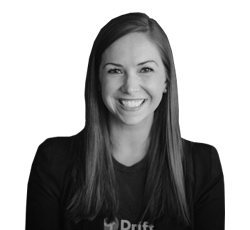













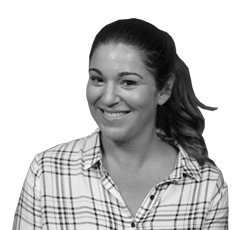

























































.png)



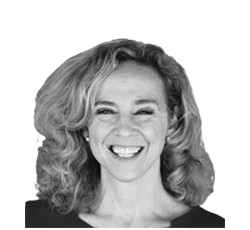

















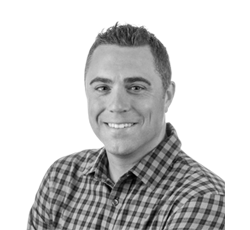


























.png)




















